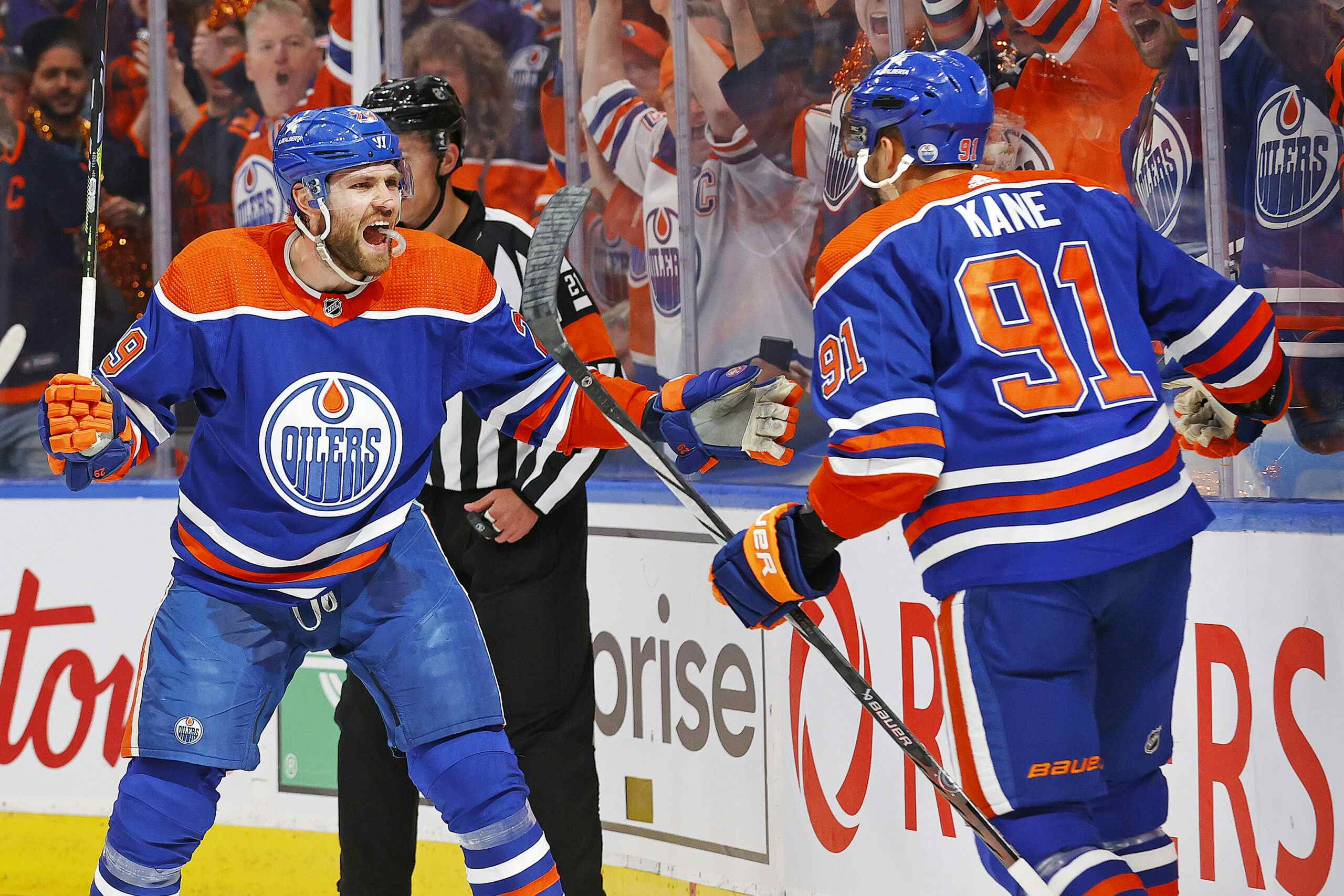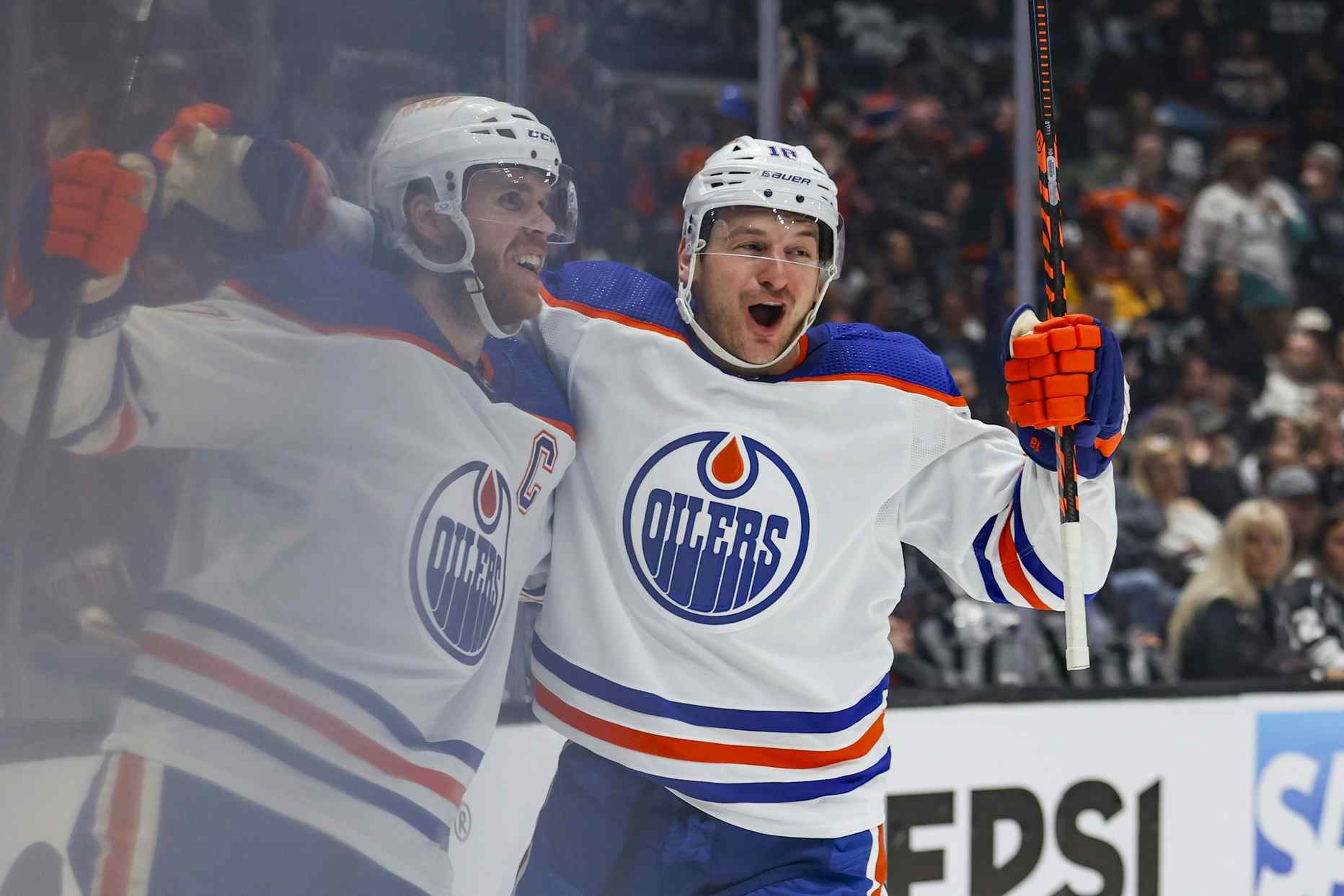The Precarious Nature of the Oilers’ Goaltending

If the Edmonton Oilers’ 2016-17 season ends up going truly
sideways, it’s going to have something to do with goaltending. This shouldn’t be
a revelation; after all, the official rebuild started back in 2009-10 with a
meltdown in net and more recently the Craig MacTavish-helmed edition of the
team foundered off something similar.
sideways, it’s going to have something to do with goaltending. This shouldn’t be
a revelation; after all, the official rebuild started back in 2009-10 with a
meltdown in net and more recently the Craig MacTavish-helmed edition of the
team foundered off something similar.
The 2016-17 team shares some of the same weaknesses as those
clubs.
clubs.
The Starter

Cam Talbot is coming off a relatively strong debut season as
a No. 1 NHL goaltender, and is a reasonable to repeat the performance.
Certainly he has the confidence of his general manager—something Dubnyk lacked—and
with a three-year, $12.5 million contract extension the Oilers are committed to
him.
a No. 1 NHL goaltender, and is a reasonable to repeat the performance.
Certainly he has the confidence of his general manager—something Dubnyk lacked—and
with a three-year, $12.5 million contract extension the Oilers are committed to
him.
His first season was somewhat uneven, which shouldn’t have
been surprising to anyone who was aware of his previous work with the Rangers. Back in
November, in a piece arguing that despite his slow start and the emergence
of Anders Nilsson he was the club’s best bet, I referenced that history:
been surprising to anyone who was aware of his previous work with the Rangers. Back in
November, in a piece arguing that despite his slow start and the emergence
of Anders Nilsson he was the club’s best bet, I referenced that history:
Henrik Lundqvist went down to injury on February 2,
thrusting Talbot into the starting role. Talbot posted a 0.895 save percentage
in his first nine games in the job, allowing three-or-more goals in seven of
those contests and posting a 0.900 save percentage or lower in eight of them… Talbot
was great the rest of the way. He posted a shutout against the Flames in his
next start and went 10-3-1 with a 0.950 save percentage in the next 14 games he
played while Lundqvist healed.
Talbot followed much the same pattern last season, slumping
badly early but finishing with strength. Ideally, Talbot will bring his
late-season form from Game 1 on next season, but a rough patch or two cannot be
ruled out.
badly early but finishing with strength. Ideally, Talbot will bring his
late-season form from Game 1 on next season, but a rough patch or two cannot be
ruled out.
The bigger concern may be injury and/or fatigue. Talbot set
a career-high with 56 games played last season; it was only the second point in
his career in which he played more than 40 games. He’s 29 years old and simply
doesn’t have much track record eating up minutes.
a career-high with 56 games played last season; it was only the second point in
his career in which he played more than 40 games. He’s 29 years old and simply
doesn’t have much track record eating up minutes.

That may not matter, of course. Dwayne Roloson had almost no
record as a 60-game goalie when he joined the Oilers, and over parts of four
seasons he was to prove himself more than capable of taking on heavy minutes
(memorably being
played unceasingly by MacTavish in 2008-09).
record as a 60-game goalie when he joined the Oilers, and over parts of four
seasons he was to prove himself more than capable of taking on heavy minutes
(memorably being
played unceasingly by MacTavish in 2008-09).
On the whole, despite these potential concerns, Talbot is a
solid bet in a starting role. The trouble is if anything goes wrong. Goalies
hit rough patches, like Devan Dubnyk did in 2013-14, or as Talbot himself did
last year. They get hurt, as Nikolai Khabibulin did in 2009. A similar issue
with Talbot could result in a full-blown disaster, because the backup plan is
not great.
solid bet in a starting role. The trouble is if anything goes wrong. Goalies
hit rough patches, like Devan Dubnyk did in 2013-14, or as Talbot himself did
last year. They get hurt, as Nikolai Khabibulin did in 2009. A similar issue
with Talbot could result in a full-blown disaster, because the backup plan is
not great.
The Backup Plan
Jonas Gustavsson is not a particularly good NHL goaltender.
By save percentage, he’s in the bottom 10 percent of all regular major-league
options in net:
By save percentage, he’s in the bottom 10 percent of all regular major-league
options in net:
Gustavsson is not a player one wants to see filling in as
starter. In fact, he’s not even particularly well-suited to the role of regular
backup. Rather, he’s the kind of goalie who makes the most sense behind a Carey
Price or Henrik Lundqvist or Tuukka Rask, though as Montreal learned last year
sometimes even then it pays to have some insurance.
starter. In fact, he’s not even particularly well-suited to the role of regular
backup. Rather, he’s the kind of goalie who makes the most sense behind a Carey
Price or Henrik Lundqvist or Tuukka Rask, though as Montreal learned last year
sometimes even then it pays to have some insurance.
The Habs signed Al Montoya this summer, having taken the
lesson to heart. Montoya replaces Mike Condon, who was so bad he sunk the team last
year. Condon’s 0.915 even-strength save percentage ranked
57th among goalies with at least 500 minutes at 5-on-5. Gustavsson finished
one slot worse than that, ranking 58th with a 0.914 5-on-5 save percentage.
lesson to heart. Montoya replaces Mike Condon, who was so bad he sunk the team last
year. Condon’s 0.915 even-strength save percentage ranked
57th among goalies with at least 500 minutes at 5-on-5. Gustavsson finished
one slot worse than that, ranking 58th with a 0.914 5-on-5 save percentage.

Laurent Brossoit is probably the better bet, if it comes to
that. He was bad in five NHL games last season, but posted 0.918 and 0.920 save
percentages in his last two seasons in the AHL. That’s 80-odd games of solid
performances. He hasn’t shown that he can hold down a major-league job, but
unlike Gustavasson he hasn’t proven that he’s a replacement-level goalie,
either.
that. He was bad in five NHL games last season, but posted 0.918 and 0.920 save
percentages in his last two seasons in the AHL. That’s 80-odd games of solid
performances. He hasn’t shown that he can hold down a major-league job, but
unlike Gustavasson he hasn’t proven that he’s a replacement-level goalie,
either.
Still, neither of these players inspires confidence.
Something going wrong with Talbot—slump, injury, some
combination of the two—is probably the worst-case scenario for Edmonton next
year. It could derail the entire season, undoing whatever progress summer
changes and McDavid’s continued development brings to the roster. It seems more
likely than not that Talbot will be healthy and will perform well, but it’s
hard not to wonder a little at how much Peter Chiarelli has riding on his
chosen goaltender.
combination of the two—is probably the worst-case scenario for Edmonton next
year. It could derail the entire season, undoing whatever progress summer
changes and McDavid’s continued development brings to the roster. It seems more
likely than not that Talbot will be healthy and will perform well, but it’s
hard not to wonder a little at how much Peter Chiarelli has riding on his
chosen goaltender.
RECENTLY BY JONATHAN WILLIS
Recent articles from Jonathan Willis





